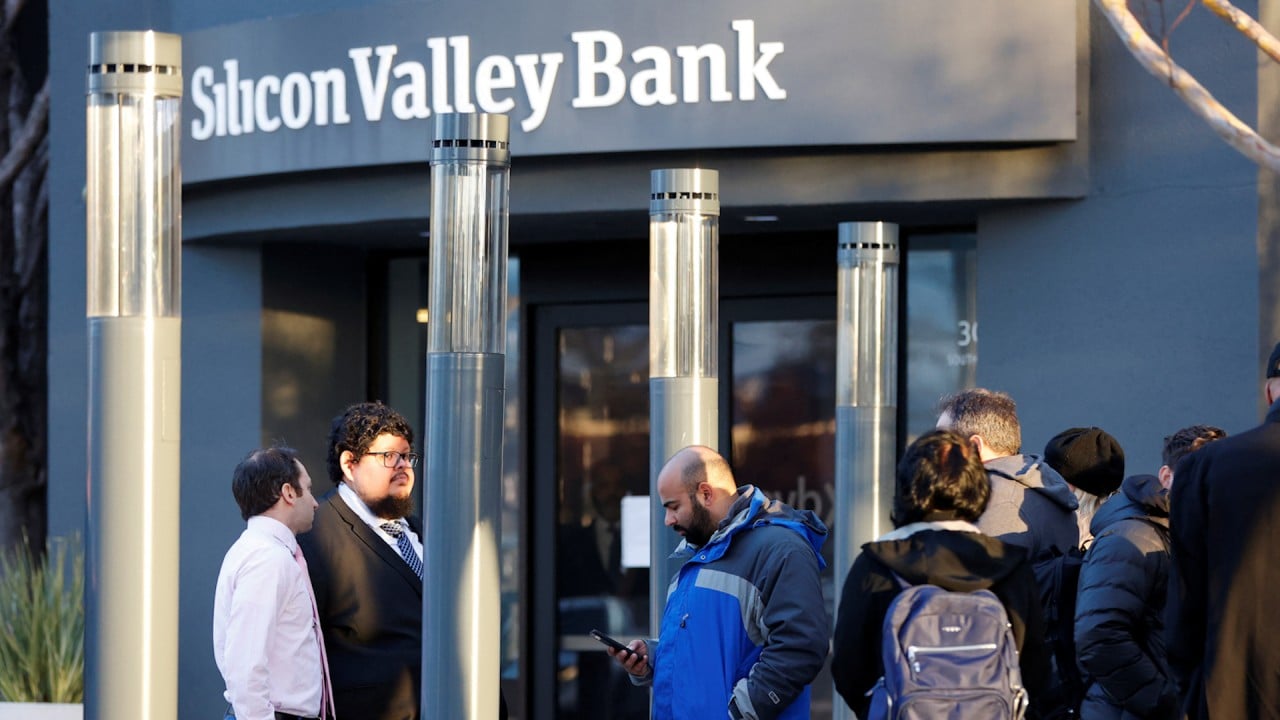
SVB’s failure a lesson in how things can suddenly go so wrong
- US lender was not insolvent, but it could not produce the capital to survive a bank run, showing once again that there is virtue in preparing for a rainy day
The fallout from the collapse of Silicon Valley Bank continues to reverberate not only through the United States’ domestic banking system, but around the world. It led directly to the shutdown of two other medium-sized US banks.
High volatility has been experienced by major stock markets. Shares in European banks have been pummelled while Credit Suisse, considered the most vulnerable, plunged to fresh record lows.
And by being the go-to bank for start-ups, even some mainland Chinese tech firms have had funds tied up in SVB. It turns out even small to mid-sized banks not considered “too big to fail” can still cause havoc.
This is a learning moment not only for Chinese start-ups, many of whom are funded by US investors who use SVB, but also China’s domestic regulators about how things could go so wrong.
SVB is the victim of an old-fashioned bank run. Rapidly rising interest rates turned what looked like good investment in long-term securities when rates were zero into a nightmare. When depositors got wind of its financing troubles, they jostled to take money out.
That in turn forced the bank to sell securities at great losses to meet its obligations, which further undermined its financial position. Its collapse was quickly followed by the crypto-friendly Silvergate Bank and the mid-sized Signature Bank.
The US Federal Reserve exempts small and medium-sized banks from including unrealised losses in their capital adequacy requirements. The exemption came after heavy lobbying by the US banking industry during Donald Trump’s presidency.
It sought to “free up” capital for small banks to grow. This gave SVB the false veneer of stability, which cracked as soon as interest rates rose.
Short-sellers targeted its stock, and depositors pulled their funds. SVB was not insolvent, but it could not produce the capital to survive a bank run.
US banking system sound despite turmoil, says treasury secretary Janet Yellen
The latest banking crisis has compelled US regulators to consider bringing capital and liquidity thresholds closer to strictures imposed on the biggest banks after the last global financial crisis. The standards of stress tests could be toughened.
Fearful of financial contagion, customers seek refuge in big banks, which are emerging as winners from the crisis. Bank of America, JPMorgan Chase, Citigroup and Wells Fargo have mopped up tens of billions in new deposits.
Back in Hong Kong, prudential supervision by banking regulators is already world-class under the framework of the Basel-based Bank of International Settlements. Regulations on the mainland are even tougher.
Still the US-triggered crisis is a reminder that to be effective, capital adequacy rules need to apply to credit risk as well as duration risk to match long-term liabilities with assets. There is virtue in preparing for a rainy day.


